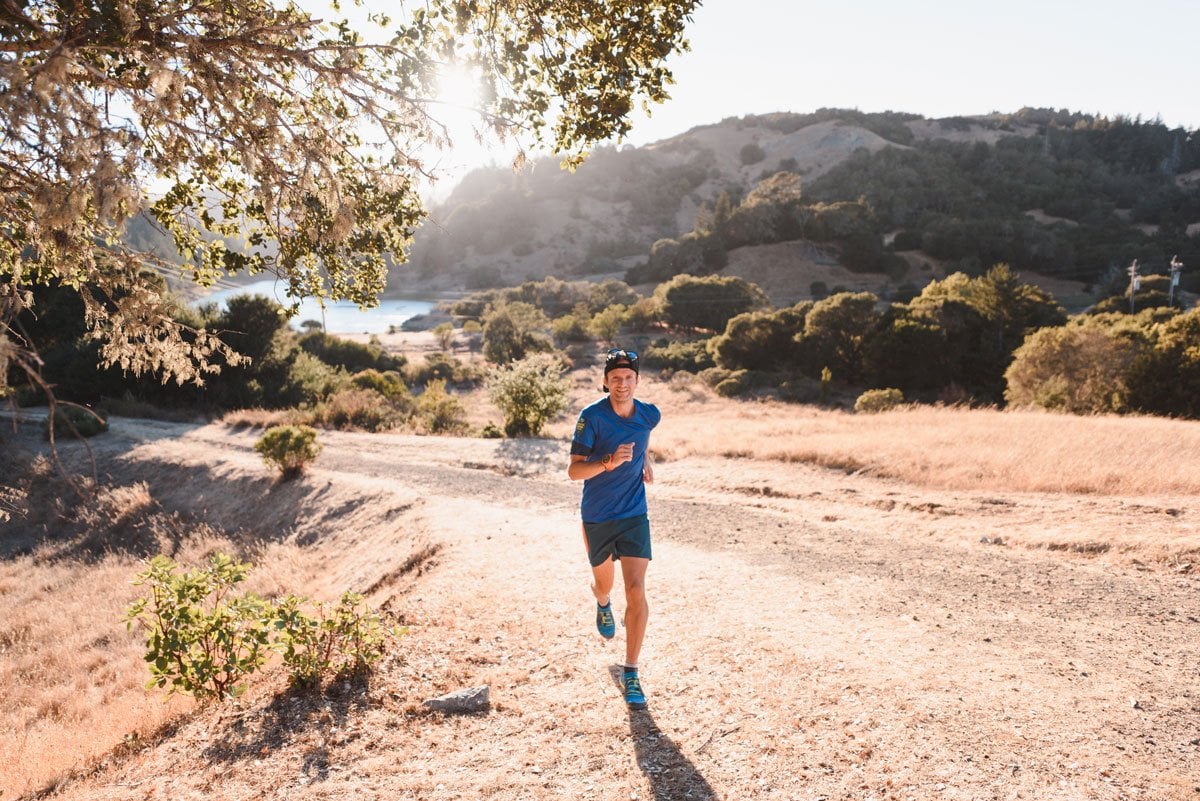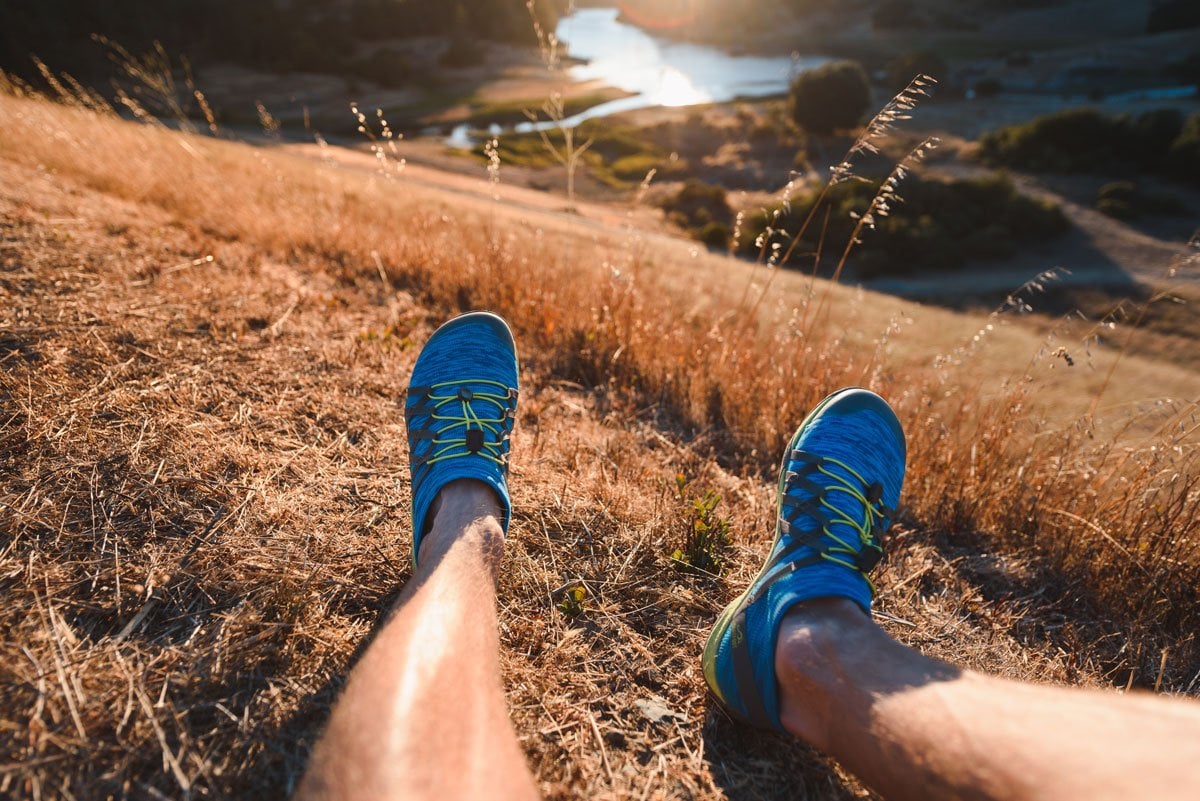If you’ve heard about barefoot running or the use of zero-drop running shoes before, then you’ve probably also learned that they come with various benefits which you may be curious about to see whether they’d benefit you as a runner.
In this post I explain everything you need to know about barefoot running, including what it is, the benefits of running barefoot and why it’s so popular among certain types of runners.
I also cover what to look for when choosing a pair of zero-drop running shoes and also some drawbacks and important things to be aware of before you hit the trails in a new pair of minimalist running shoes.
What is barefoot running?
Sometimes referred to as minimal running, this is the art of re-aligning your running style to a more natural and efficient one.
Running with a more natural style and without the added extra cushioning, arch support and weight of conventional running shoes makes a lot of sense, and appeals to runners on many levels, especially if you’ve struggled with poor running form and injuries and are looking to try something new.
I can’t talk about barefoot running without referencing the bestselling book that made this form of running hugely popular, which is Born to Run, by author Chris McDougall.
I highly encourage you to buy or borrow a copy, as it offers compelling insights into the barefoot running movement, as well as a broader look at the history of natural running as well as other aspects of running including ultramarathons, and I know you’ll find it to be a fascinating read.
With that said, there are some important considerations to be aware of before you slip on a pair of minimalist running shoes and hit the road for your next run, especially if you want to make your minimalist running adventures a success and reduce your chances of picking up an injury along the way – I’ll get into those later in this post.
What are barefoot running shoes?
Most ‘traditional’ running shoes have a drop of between 6 and 8mm – some are less, such as 4mm, and some have a very high stack of 10mm (or more in some cases). This drop usually encompasses some form of foam midsole that provides cushioning as you run.
Barefoot shoes are essentially minimalist running shoes with a ‘zero-drop’. Zero-drop refers to the differential between the heel stack and the front of the shoe… i.e. with these shoes, there isn’t one, and there’s no added foam cushioning – just like how it would be if you went truly barefoot with no shoes.
Because it’s not safe for most people to run truly barefoot without cutting them or otherwise hurting the soles, these minimalist shoes are designed to provide your feet with protection from hot or rough ground, so they have a rubber sole much like other running shoes.
So when you see me referring to barefoot running in this article I’m actually talking about running with zero drop shoes that protect your feet whilst allowing you to simulate true barefoot running, as opposed to running without shoes.
What are the benefits of barefoot running?
These are the three key benefits of barefoot running:
1. No elevated and cushioned heel to ‘support’ your landing
Running in shoes with no cushioning will force your body to re-learn how to run in the way it was designed to, with a more forefoot landing.
Wearing these minimalist shoes allows your feet to move naturally, without the restrictions imposed by traditional running shoes. This natural movement can help reduce the risk of injury and promote a more efficient running style.
Done correctly (and – importantly – started very gradually), many barefoot runners report seeing running niggles like plantar fasciitis and shin splints become a thing of the past after they transitioned to barefoot running.
2. Improved running form
You should become a more efficient runner with light-footed steps at a higher running cadence – great contributors to developing a good running form.
Running with zero-drop shoes encourages a midfoot or forefoot strike, rather than over-extending and landing with a heel-strike, which many runners tend to do in the more forgiving, cushioned traditional running shoes.
It’s hard for barefoot runners to land with a heel strike, because the natural running position and style actively discourages it.
Landing with a mid or fore-foot strike can lead to a smoother, more efficient stride, and a reduced risk of impact injuries.
3. Stronger feet with improved stability
You should start to activate smaller muscles in your feet which will help with balance, stability and proprioception.
This is one of the main reasons why I love to occasionally slip on a pair of minimalist running shoes and hit the trains in them. I really enjoy feeling that close connection with the trails underfoot.
You’ll also be able to read the terrain beneath with greater intuition and accuracy. When you have strong ankles and muscles in your feet, the likelihood of rolling your ankle is reduced.
What You Need To Know About Barefoot Running Technique
Firstly, it’s important to note that I am a firm believer of “everything in moderation”.
So if you’re new to barefoot running please make sure you don’t overdo it by running too far or too fast during your first few minimal runs.
This is the NUMBER ONE mistake runners make when trying out barefoot running – they underestimate how different barefoot shoes and this running style is from what they’re used to, and they hurt themselves!
I would suggest starting with just a few minutes of barefoot running at a time, building up time and distance slowly as your body strengthens and adapts.
You may also want to stick to running on grass and light trails to begin with. These surfaces are much more forgiving on your body than man-made surfaces such as tarmac and concrete.
If you injure yourself from overuse or incorrect form before you even get the chance to feel what a true barefoot running technique feel like, then you may end up dismissing it altogether, and that would be a shame.
How To Start Barefoot Running – Tips For Success
1. Don’t overstride
This means landing with your foot too far in front of your center of mass.
You will more than likely be heel striking in this situation, which is bad.
Essentially, you want your reaching foot to strike the ground beneath your hips, and you should be aiming to land with your forefoot flat without any pronation.
Wearing minimalist shoes (or practicing running barefoot for real) will help your body naturally want to land the right way. For further help getting there, here are 2 simple ways to keep this in check when training:
- Increase your running cadence so that you make more steps, this will reduce the force at which your feet contact the ground.
- Lift your feet higher and always keep a slight bend in your legs to prevent forward over-extension in your stride, which can cause strain on your calf muscles and Achilles tendon.
2. Land on your forefoot
It’s hard to know if you are landing truly on your forefoot, so I would advise getting a friend or partner to watch you as you run, you could also get them to film your technique so that you can visual correct yourself.
You could also find a place with no grit or harmful objects on the ground to practice running with no shoes on at all.
You will soon know if you’re landing on your forefoot because it will feel comfortable and efficient.
Still having trouble landing on your forefoot? Another tip is to walk backwards while slightly leaning forwards. Try speeding it up a little and you’ll get it.
3. Patience is a virtue
It’s important to gradually build up the muscles that you are now activating by running barefoot.
Take your time to learn barefoot running and stay motivated by exploring new trails as you get used to the technique.
It can take months before you truly master it and your body tunes back into this natural style of running.
It’s important to note again that when you first start running barefoot, all the muscles in your lower legs (as well as some further up) are going to be working harder and in a different way to what they’re used to.
After all, you just changed your running style, no longer have a heel-to-toe drop in your shoes, and zero cushioning to soften the impact if you don’t land with the form described above!
In particular, you’ll notice that your feet and calves will be working significantly harder than they’re used to. This is another reason starting with very short, easy runs and taking recovery breaks is so important to avoid straining them as you build up strength.
I always advise adding in some cross-training when learning a new running form. This will help build full body and core strength and reduce overuse injury. Plus it keeps things fun!
Barefoot Running Shoes
In the photos throughout this post I am barefoot running in the Merrell Trail Glove 4 Knit shoes which I bought from Zappos.com for their fast and free delivery, oh and they also have a 365-day return policy which is pretty awesome.
The Merrell Trail Glove 4 Knit shoes really do feel like you’re wearing gloves because they’re made from one seamless piece of knitted material that adapts to your feet as they flex.
They offer the right amount of protection where you need it too, on the toe cap and the Vibram outsole.
Merrell is famous for its wide range of trail and mountain gear, so it’s awesome to see them pushing the barefoot running scene with such a durable, versatile, and high-performance line-up of minimalist barefoot shoes.
Within that line-up, I’d recommend giving these shoes a try to make your barefoot running as comfortable as possible.
Enjoy the journey!
I hope this article helps put you on an exciting new journey of learning to run barefoot.
Put the training in and I’m pretty sure you’re going to love barefoot running but if you don’t like it… at least you tried something new! 🙂
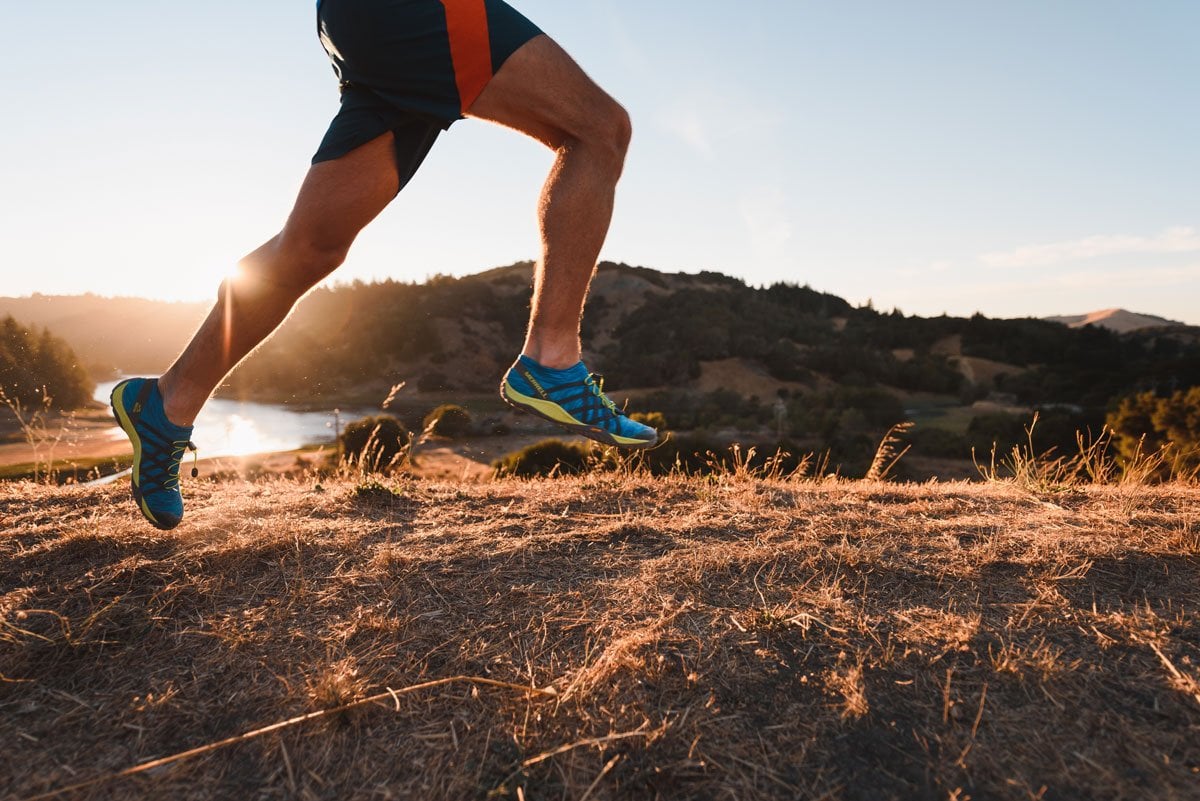
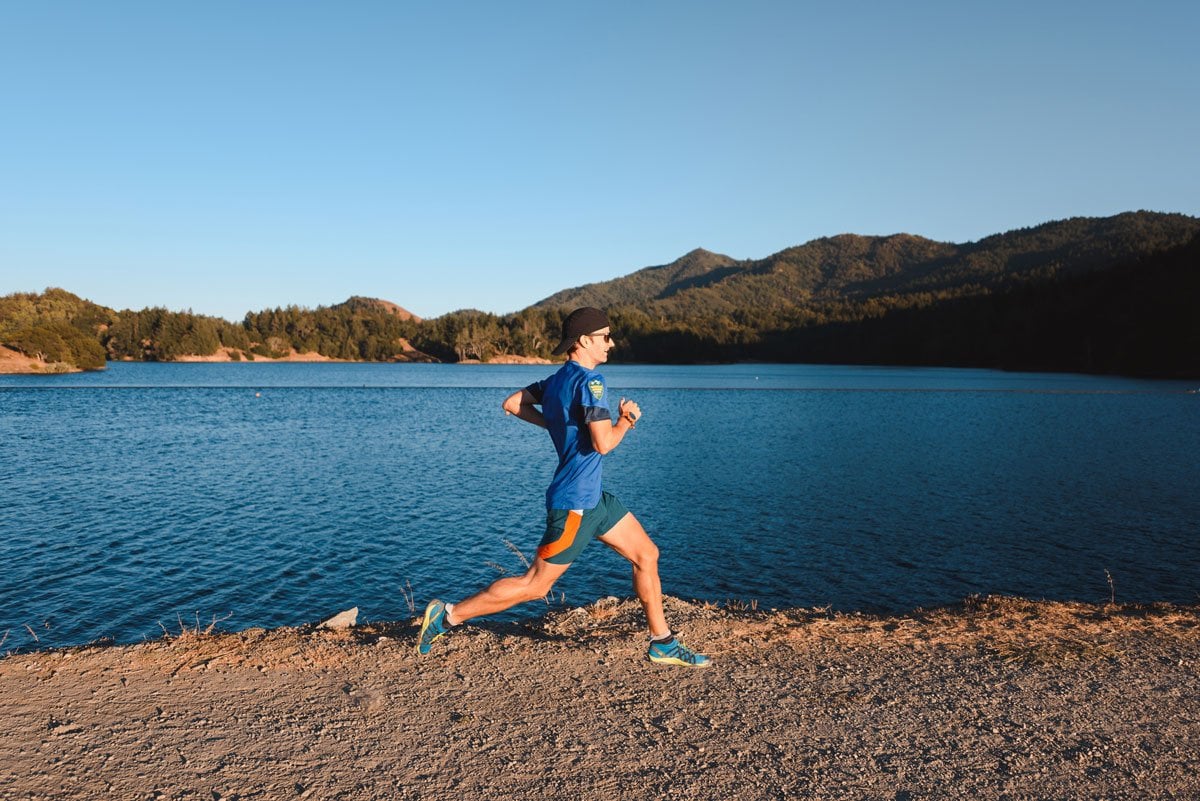


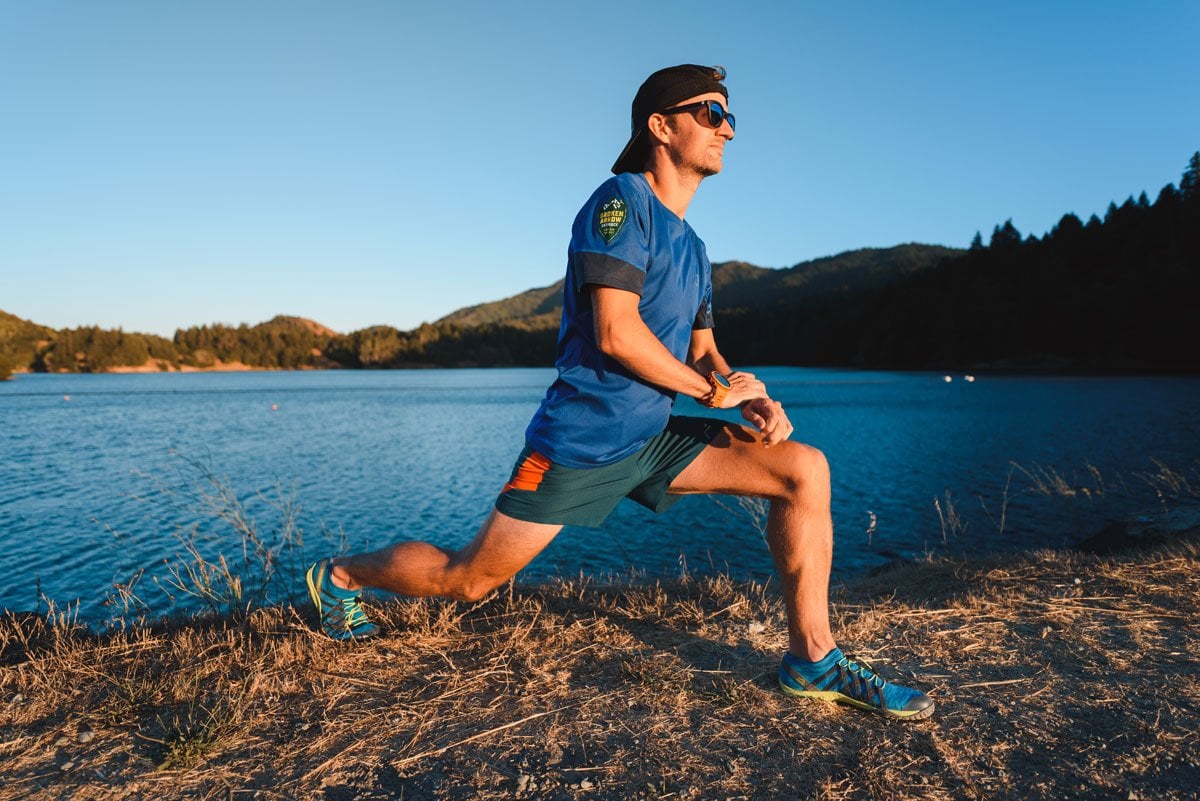
![The Best Trail Running Shoes [2024] The Best Trail Running Shoes [2024]](https://www.trailandkale.com/wp-content/uploads/2024/02/best-trail-running-shoes-Trail-and-Kale-Recommends-2024-110x75.webp)
![14+ Best On Running Shoes [2024] Ranked With Reviews: Ultimate On Cloud Buyer’s Guide 14+ Best On Running Shoes [2024] Ranked With Reviews: Ultimate On Cloud Buyer’s Guide](https://www.trailandkale.com/wp-content/uploads/2024/05/Best-On-Running-Shoes-of-2024-110x75.webp)
